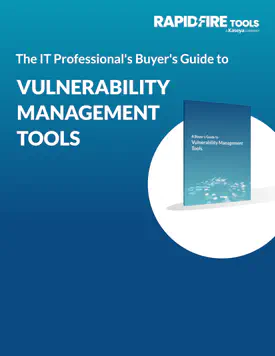Network vulnerability scans play a crucial role in safeguarding networks. The process involves both External Vulnerability Scanning — a scan from the outside to check your network’s firewall and other “perimeter” defenses — and Internal Vulnerability Scanning — a scan that tests every device on your network. Internal vulnerability scans not only look at your servers and workstations but also check laptops, mobile devices, printers, network phones and anything else internally networked.
The scanning process is identical to what hackers do when they search for weaknesses on a targeted network. The scans detect any known vulnerability and send an alert after each scan with details on the vulnerable devices and nature of the weaknesses. This is critically important because unless you find and fix the root cause of the problem, it leaves your systems inside the network vulnerable to attack.
New bugs and vulnerabilities are identified daily and can exist on any device on your network — both public facing computers and systems inside the network. Vulnerabilities often remain unchecked for weeks, months or even longer, increasing the likelihood that a random check of your system by hackers will yield a payday for them and a nightmare for you.
Simply scanning your network doesn’t make your network any safer or less vulnerable to a data breach. It’s like getting your teeth X-rayed. As a professional you need to interpret the fuzzy gray image, determine what the actual decay is, and then address a small cavity before it worsens to the extent that the tooth cracks or needs to be removed.
A scan checks more than 65,000 ports on every device on your network, so you can imagine the amount of data it delivers. Not all discovered vulnerabilities present the same risk level and it is virtually impossible to address every vulnerability on every device, every day.
A great number of network vulnerabilities are benign because they’re on devices that don’t contain important information worth stealing or they aren’t connected to more important devices. Other vulnerabilities are benign because they have a very low likelihood of being exploited.
Now that you understand what a vulnerability scan is and how important this process is, you need to consider implementing vulnerability scanning immediately.
VulScan is the industry-leading vulnerability management platform that provides both internal and external vulnerability scanning and can be equipped with an optional portable scanner you can tote from one location to another for ad hoc scans. It includes all the key features and functions you need, without the unnecessary bells and whistles that add complexity and cost.
Get a demo of VulScan and see how it puts you in the ideal position to deliver vulnerability management and simplify the vulnerability management lifecycle.
